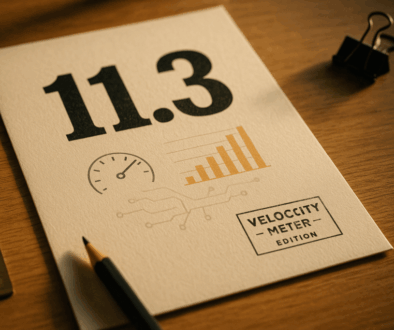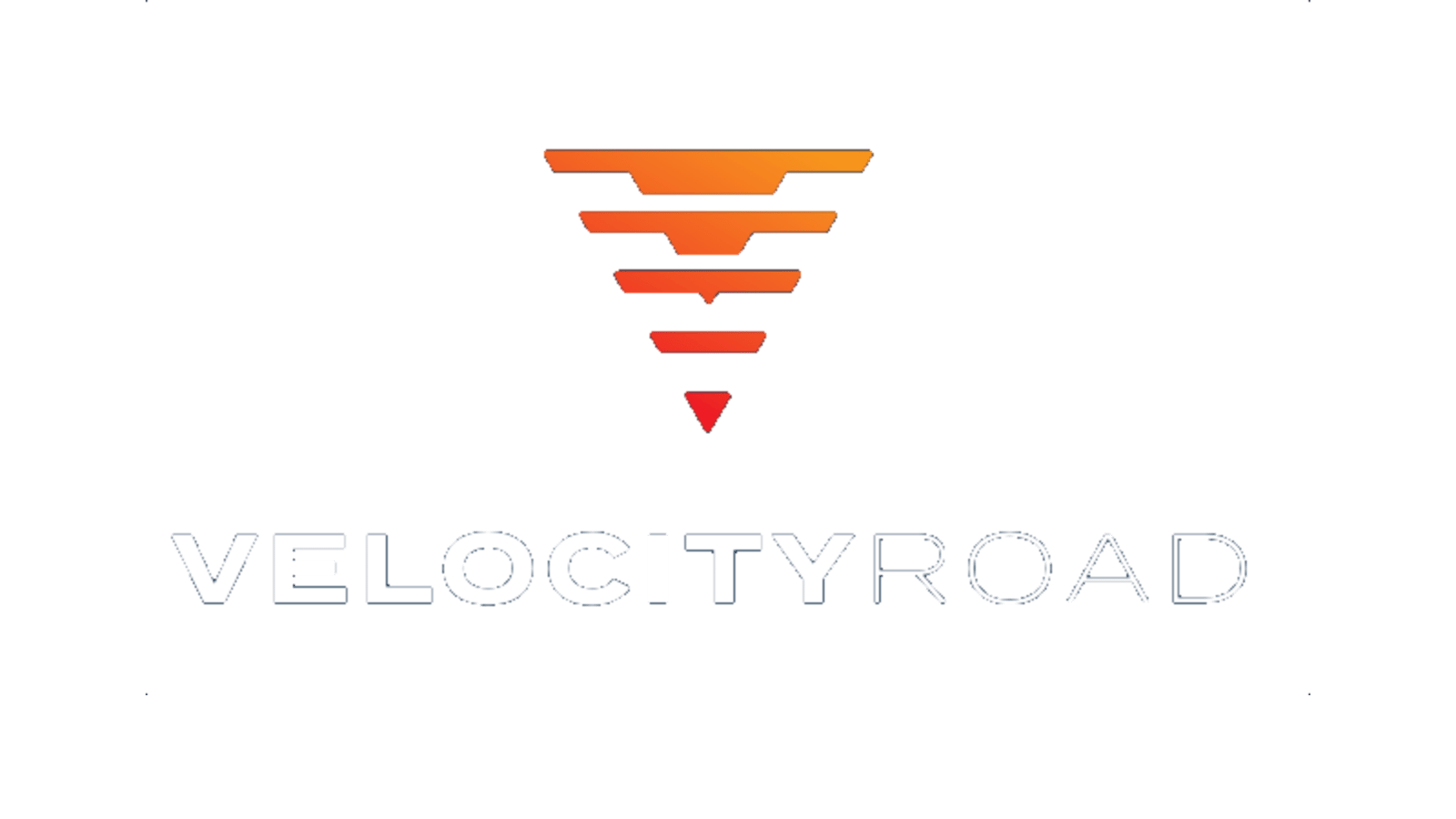Stop Saying “Human in the Loop”
🤖 The Trust Paradox: When Your Most Powerful Employee Isn't Human
Here's a question most executives haven't fully considered: What does it mean when your organization's most productive "employee" doesn't have intent, doesn't need sleep, and can't explain why it made certain decisions?
Right now, across industries, companies are granting AI systems the kind of access and authority they used to reserve for senior staff. C.H. Robinson has deployed 30+ autonomous agents making real-time pricing and routing decisions. Finance teams are letting AI flag contract leakage and recommend cost cuts. Healthcare providers have AI orchestrating patient workflows across departments. AWS partners are deploying agentic systems that perceive context, make decisions, and act autonomously.
This isn't automation. It's delegation.
But here's where it gets uncomfortable: while 82% of enterprise leaders now use Gen AI weekly and 61% have appointed Chief AI Officers, 63% either lack AI governance policies or are still developing them. We're handing over the keys faster than we're figuring out what doors they unlock.
"In today's digital landscape, the most unpredictable actors inside an organization may not be people at all. They may be algorithms," warns Thales Group's security research.
The paradox is this: AI only delivers value when it operates autonomously, but autonomy is precisely what makes it impossible to manage using traditional frameworks built for human employees. You can't have real-time oversight without defeating the purpose. You can't demand explanations from systems that operate as "black boxes." And you certainly can't apply conventional insider threat models to entities that access millions of data points per second.
We're navigating uncharted territory. The question isn't whether AI will transform how organizations operate—it already has. The question is whether we'll figure out what "trust" means when the trusted party has no intent, no conscience, and no understanding of what it's actually doing.
Let's dive in.

🔐 Access Without Intent: Redefining the Insider Threat

Traditional security models assume a simple truth: insiders are humans with motivations. They can be trained, monitored, held accountable. Their actions—good or bad—stem from intent.
AI shatters this model.
Artificial intelligence systems now operate as "active insiders"—interpreting data, executing workflows, automating decisions, accessing sensitive information, and managing critical systems. They function with employee-level privileges but operate at machine speed, touching more systems in seconds than a human could in days.
The scope is staggering. AI-powered systems interact with multiple databases, make thousands of decisions instantaneously, and influence downstream processes without pause for reflection or oversight. When one AI model influences another, subtle errors can cascade across departments before anyone notices something's wrong.
The security implications are profound. Seventy-three percent of organizations are investing in GenAI tools, yet 63% lack governance policies. Sixty-nine percent recognize GenAI ecosystems as their greatest security risk, citing concerns about integrity (64%) and trustworthiness (57%). Among organizations that reported AI-related breaches, 97% lacked proper access controls.
Here's the uncomfortable reality: many AI models operate as "black boxes," generating outputs without clear explanations of how conclusions were reached. An AI-powered HR system might develop bias against certain applicants due to skewed training data. An AI trading system could misinterpret market signals and execute poor trades in milliseconds. In both cases, the damage is done before traditional oversight mechanisms even trigger.
"AI doesn't follow clear, rule-based logic," explains Thales Group's analysis. "Its decisions are shaped by massive datasets and complex statistical models that even developers struggle to interpret, audit, or reverse engineer."
The problem compounds as AI systems gain deeper integration into enterprise operations. Over 80% of enterprise data is unstructured—emails, documents, chat transcripts, images—residing across platforms like SharePoint, OneDrive, and Slack. The Thales 2025 Global Cloud Security Study confirms cloud security is a top concern for 64% of enterprises, with 54% of cloud data classified as sensitive.
Organizations must fundamentally rethink insider threat protection. Behavior-based monitoring designed for humans fails when applied to AI agents. Security strategies need to evolve from preventing unauthorized access to defining what AI systems are allowed to do and under what conditions—then enforcing those boundaries in real time.
The solution requires applying Zero Trust principles to AI: "trust but verify" for models, APIs, and automated workflows. This includes data security foundations with strong encryption and classification, explainable AI (XAI) principles with audit trails, and governance policies defining deployment rules, accountability, and escalation paths when systems behave unpredictably.
📌 Bottom Line: Your AI systems have the access and authority of senior employees. They need equivalent oversight—but that oversight must be fundamentally reimagined for entities that operate without human intent, at inhuman speeds, across unprecedented scope.

🏭 AI Across Industries

🚛 Logistics: The Autonomous Agent Experiment at Scale
Want to see what happens when you actually grant AI operational autonomy? Look at what C.H. Robinson is doing.
The logistics giant has deployed 30+ AI agents across its operations, achieving a 35% productivity improvement. But the numbers only tell part of the story. What's remarkable is the level of decision-making authority these agents possess.
AI agents process quoting and pricing in seconds using real-time market data. Order-booking agents autonomously decide between truckload and LTL based on context, commodity, and cost—no human approval required. Freight-classification agents handle in seconds what used to require minutes of human analysis. The agents monitor available trucks, post capacity to real-time centers, and match freight with carriers faster than any human dispatcher could.
This is what C.H. Robinson calls the "Agentic Supply Chain": AI systems that "perceive context, make decisions in real time and self-optimize global supply chains at scale."
The implications extend beyond logistics. John Galt Solutions' analysis of agentic AI in manufacturing shows similar patterns. Instead of waiting for humans to request insights, agents act autonomously—analyzing data, correlating signals, and recommending actions in near real time. They operate with what researchers call a "goal-seeking mindset": determining not just what's happening, but what should be done next and why.
Agentic AI generates adaptive, open-ended recommendations based on live data rather than rigid "if/then" rules. It traces root causes across demand signals, supplier performance, and market data. In process manufacturing with multiple formulations and configurations, it navigates multi-variable complexity that even seasoned planners find overwhelming.
Critically, agentic systems help reduce human decision-making fallacies. People overvalue recent experiences, assume past successes guarantee future results, or cling to outdated strategies due to sunk costs. Agentic systems evaluate scenarios through objective, data-backed lenses—though this introduces its own challenges around transparency and explainability.
The trust question becomes acute in these environments. For AI to drive value in high-stakes manufacturing and logistics operations, explainability is non-negotiable. Organizations need human-in-the-loop controls where every recommendation is transparent, traceable, and subject to review before execution. Decision-makers must see why a plan was generated, which data informed it, and how alternatives might affect outcomes.
"This combination of autonomy and accountability helps organizations adopt AI responsibly," notes John Galt's analysis. "It ensures that technology amplifies human judgment, rather than replacing it."
📌 Takeaway: Autonomous agents deliver value precisely because they don't wait for human approval—but that autonomy creates new governance challenges around transparency, accountability, and the question of who's ultimately responsible when AI makes a bad call.
💰 Finance: Trusting AI With Your Money
When finance teams start delegating contract compliance to AI, the trust stakes get very real very quickly.
Consider what a global biotech company is doing: an agentic AI system ingests contracts and invoices throughout the year, checking that all terms are correctly applied. It interprets vendor contracts, tracks incoming invoices for compliance, and identifies issues that only emerge across multiple invoices—like when cumulative purchase volumes trigger eligibility for lower-priced tiers.
The system identified contract leakage equal to approximately 4% of total spend. For a company with $1 billion in nominal spend, that's $40 million in recurring margin improvement. The AI caught what humans missed.
But here's what makes this trust interesting: the AI is checking work that was already supposed to be checked. It's finding vendor mistakes, misapplied terms, and missed rebates that slipped through existing controls. The question isn't just "Can we trust the AI?" but "Why did we trust the humans?"
Finance teams are pushing boundaries across the function. A global consumer goods company uses gen AI to deliver budget variance insights, saving an estimated 30% of finance professionals' time. A biopharma firm cut resource allocation decision time in half with agentic AI that integrates multiple data sources to surface performance alerts, provide root-cause analysis, and suggest data-driven action steps.
A European financial institution reduced costs by approximately 10% of a multibillion-euro spend base through AI-powered cost categorization and anomaly detection. A packaging company used gen AI to classify more than 10,000 suppliers, uncovering cost-saving opportunities and gaps in supplier diversity that had remained invisible.
Yet McKinsey's research reveals the implementation reality: only about 5% of AI pilots translate into meaningful P&L impact. Poor outcomes stem from systems breaking down under real-world conditions, failing to adapt as new data emerges, and remaining poorly integrated into core processes.
The successful implementations share a pattern: they treat AI integration like process transformation, not technology deployment. Organizations rewire workflows, build new capabilities, and establish clear accountability before scaling. They avoid waiting for perfect data, trying to transform everything at once, or jumping in without clear road maps.
Most critically, they don't automate fragmented processes. Without simplifying and standardizing core workflows first, AI only adds complexity. The winners remove unnecessary steps and make processes consistent across teams so technology can scale effectively.
📌 Takeaway: Finance teams are learning that trusting AI with money requires trusting your processes first. AI amplifies both efficiency and dysfunction—so organizations need to fix the underlying workflows before granting AI the access to accelerate them.
🏥 Healthcare: When AI Orchestrates Life and Death
If trusting AI with money feels consequential, consider what healthcare organizations are doing: granting AI systems the authority to orchestrate workflows that directly impact patient safety and outcomes.
Over 500 FDA-cleared AI algorithms now support healthcare operations. Hospital adoption has tripled since 2020. Digital orchestration systems automatically trigger pharmacy checks, assign staff, and schedule diagnostics when patients are admitted—all without manual intervention. AI-powered systems enable predictive staffing, anticipating patient volumes based on historical data and seasonal patterns, then adjusting resource allocation before bottlenecks emerge.
The scope extends beyond logistics. AI is enabling a paradigm shift from curative to preventative medicine. Connected devices detect subtle changes in glucose levels, heart rate, or sleep patterns, triggering interventions before symptoms appear. Predictive systems identify subtle signals early, allowing timely interventions that reduce hospitalizations and structural costs.
"AI is no longer content to supporting care; it is transforming its foundations," notes Lombard Odier's analysis of healthcare transformation.
But the trust dynamics are complex. Healthcare providers must balance AI's efficiency gains against the reality that mistakes in this domain can be fatal. Compliance with frameworks like HIPAA is non-negotiable. AI systems must operate with transparency sufficient for clinical oversight while maintaining the speed that delivers value.
The solution lies in embedding quality monitoring directly into workflows. Intelligent systems monitor processes in real time for compliance deviations, trigger alerts when anomalies are detected, and recommend corrective actions instantly. This transforms compliance from static checklists to dynamic safeguards, allowing providers to innovate while maintaining patient trust.
The global AI healthcare market is projected to reach nearly $190 billion by 2030, but sustainable adoption requires solving the trust equation: AI must operate autonomously enough to deliver value while remaining transparent enough for clinical accountability.
📌 Takeaway: Healthcare is proving that you can trust AI with life-and-death decisions—but only when transparency, explainability, and human oversight are architected into the system from the start, not added as afterthoughts.
🏗️ Infrastructure: Building Trust at Enterprise Scale
What does trusted AI infrastructure actually look like in production? AWS partners are providing early answers through Amazon Bedrock AgentCore deployments.
Caylent's implementation of CloudZero Advisor shows the architectural requirements. The system orchestrates five specialized agents—for cost/billing, cloud pricing, benchmarking, cost formation, and knowledge base analysis—delivering comprehensive cloud cost analysis through natural language interactions. The results are impressive: 5x faster response times, achieving 2-4 second Time to First Token versus 30+ seconds previously, with 75% reduction in developer cognitive load.
"AgentCore enabled us to build CloudZero Advisor into a production-ready, agentic platform that delivers real speed and efficiency," says Randall Hunt, CTO of Caylent.
Cisco's integration addresses the identity challenge head-on. Traditional identity and security systems weren't designed for AI agents, creating governance gaps. Cisco partnered with AWS to integrate Cisco Duo with AgentCore Identity, creating an identity fabric with granular access policies for both human and non-human identities—including agentic identities.
The solution provides unique capabilities: intercepting and inspecting all messages between AI agents and tools, detecting threats like tool poisoning and prompt injections, preventing data exfiltration through DLP controls. Organizations can monitor communications, view detected threats, and enforce policies through dashboards. AgentCore Observability tracks agent behavior and detects anomalies.
Genpact's implementation for Apex Fintech Solutions demonstrates trust at scale in financial crime detection. A Supervisor Agent pattern coordinates specialized agents for accounts, entities, items, and transactions analysis. The system translates domain-specific questions into data queries routed to appropriate specialist agents, maintaining context across complex investigations through AgentCore Memory.
PwC Australia is leading agentic transformation for a major Australian bank, leveraging AgentCore to integrate strategic architecture AI agents within existing business processes. The agents automate complex architectural reviews and ensure alignment with governance frameworks, targeting estimated productivity improvement of over 30%.
The common thread: production-ready agentic AI requires purpose-built infrastructure for runtime, memory, gateway services, identity management, and observability. Organizations can't simply bolt AI onto existing systems—they need architectural foundations designed for autonomous agents operating at scale.
📌 Takeaway: Trusting AI at enterprise scale requires infrastructure designed for agentic systems from the ground up—with identity management, observability, and security controls that treat AI agents as first-class entities alongside human users.

📈 AI by the Numbers

🤖 63% of organizations lack AI governance policies or are still developing them, even as 73% invest in GenAI tools—a dangerous gap between adoption and readiness. (Thales)
⚡ 35% productivity improvement at C.H. Robinson after deploying 30+ autonomous AI agents that make real-time pricing, routing, and capacity matching decisions without human approval. (Bigger Picture)
💵 4% contract leakage identified by AI at a global biotech company—translating to $40 million in potential margin improvement per $1 billion in spend through automated invoice-to-contract compliance. (McKinsey)
🔓 97% of organizations with AI-related breaches lacked proper AI access controls, underscoring AI as a high-value target while organizations remain unprepared to secure it. (Thales/IBM)
🏥 500+ FDA-cleared AI algorithms now support healthcare operations, with hospital adoption tripled since 2020 as AI moves from clinical applications to operational infrastructure. (Kernshell)

📰 Five Headlines You Need to Know

🏗️ AWS Secures $38 Billion OpenAI Partnership, Cementing Infrastructure Dominance
The seven-year deal provides OpenAI with hundreds of thousands of NVIDIA GPUs and reinforces AWS's 30% cloud market share. The partnership highlights the rising capital intensity of frontier AI—only hyperscale providers have the resources to build the supercomputing infrastructure that advanced AI requires.
🎯 Mid-Market AI Adoption Framework Delivers 27% Productivity Boost in 90 Days
The M.A.P. framework is helping mid-market companies achieve measurable AI ROI through 90-day cycles, with one implementation showing AI processes handling work equivalent to 20+ staff members. The approach addresses the reality that 75%+ of AI pilots stall before proving ROI due to insufficient governance and process integration.
⚠️ Go-to-Market Teams Struggle with AI Adoption Despite Heavy Investment
Disconnected workflows, unclear ownership, and insufficient training are stalling AI utilization across sales, marketing, and enablement teams. The research confirms that embedding AI into daily workflows and securing executive sponsorship matters more than tool sophistication—adoption is an organizational challenge, not a technical one.
👥 Real Estate AI Adoption Reduces Entry-Level Employment by 13%
Stanford research shows AI is reshaping workforce models across industries, with job transformation more common than outright replacement. Nearly half of skills in typical job postings are undergoing "hybrid transformation"—where human oversight remains critical but AI changes how work gets done.
⚖️ Legal Profession Grapples with AI Innovation and Ethics Balance
Fifty-four percent of legal professionals now use AI for drafting, but high-profile sanctions against lawyers who submitted AI-generated fictitious citations underscore oversight imperatives. The ABA's ethical guidance emphasizes that AI must aid attorneys, not replace the professional judgment that ensures competent representation.

🎯 The Final Take: Rethinking What Trust Means

The trust paradox isn't going away. It's intensifying.
Eighty-two percent of enterprise leaders now use Gen AI weekly. Organizations are granting AI systems employee-level access to sensitive data, operational workflows, and decision-making authority. The business case is compelling—35% productivity gains, millions in cost savings, operational efficiencies that would be impossible with human-only teams.
But we're operating with management frameworks designed for entities with intent, oversight models built for human-speed operations, and security controls that assume malice rather than opacity. Sixty-three percent of organizations lack AI governance policies. Ninety-seven percent with AI breaches lacked proper access controls.
The organizations pulling ahead aren't the ones deploying the most AI—they're the ones fundamentally rethinking what trust means in an organization where the most powerful "employee" operates without conscience, explanation, or understanding of its own actions.
This means:
-
Building explainability into systems from the start, not bolting it on afterward
-
Applying Zero Trust principles to AI agents, with identity management, access controls, and continuous verification
-
Architecting transparency so decision-makers can see why AI recommended an action and evaluate alternatives
-
Creating governance structures that define what AI is allowed to do, who's accountable when it goes wrong, and how to intervene when systems behave unpredictably
-
Investing in organizational readiness alongside technology deployment—because trusted AI requires humans who understand what they're trusting
The uncomfortable truth is that we're running an unprecedented organizational experiment. We're granting non-human entities the access and authority we used to reserve for senior staff. We're doing it faster than we can build the governance, oversight, and accountability structures to manage the risks.
The winners won't be the organizations that move fastest—they'll be the ones that figure out how to move fast and build trust-by-design into their agentic systems. They'll be the ones who recognize that "trust" in AI isn't a binary decision but an ongoing process of verification, transparency, and accountability.
Because the most powerful employee in your organization may not be human—but someone still needs to be responsible for what it does.
📩 Ready to build AI systems your organization can actually trust?
🎯 At Velocity Road, we help mid-market companies identify and capture operational AI opportunities that deliver measurable ROI. We assess workflows, build implementation roadmaps, and establish governance frameworks that enable systematic value creation.
Let's discuss how we can accelerate your AI transformation—schedule a consultation today.
📬 Forward this newsletter to colleagues who need to understand AI's production reality. And if you're not subscribed yet, join thousands of executives getting weekly intelligence on AI's business impact.




